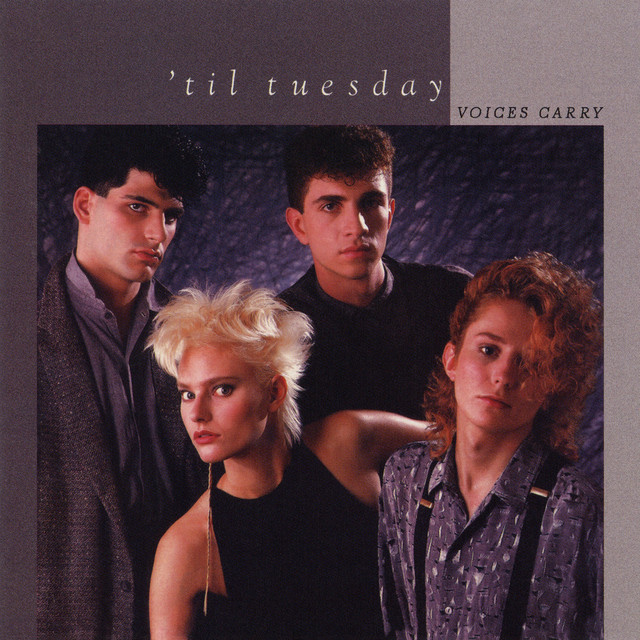 In 1982, John Mellencamp released “Jack and Diane,” a song that would become an iconic portrayal of small-town American life and adolescent longing. Capturing the essence of teenage experience, the track blends melodic rock with storytelling lyricism, creating a vivid portrait of love, ambition, and the bittersweet passage from youth to adulthood. At its heart, “Jack and Diane” is both nostalgic and immediate, combining relatable characters with Mellencamp’s signature heartland rock sound—a mix of jangly guitars, steady rhythm, and earnest vocals. The song tells the story of two young lovers navigating the trials of adolescence and the weight of their small-town surroundings, encapsulating themes of hope, vulnerability, and fleeting freedom. Its memorable chorus, infectious hooks, and detailed narrative have allowed “Jack and Diane” to resonate with generations of listeners, cementing its status as a cultural touchstone. Beyond its commercial success, the track embodies the spirit of American rock in the early 1980s, reflecting Mellencamp’s keen observational songwriting and ability to translate ordinary life into universally compelling music. With a combination of emotional authenticity, memorable melody, and storytelling depth, “Jack and Diane” remains a defining moment in Mellencamp’s career and a landmark of the heartland rock genre.
In 1982, John Mellencamp released “Jack and Diane,” a song that would become an iconic portrayal of small-town American life and adolescent longing. Capturing the essence of teenage experience, the track blends melodic rock with storytelling lyricism, creating a vivid portrait of love, ambition, and the bittersweet passage from youth to adulthood. At its heart, “Jack and Diane” is both nostalgic and immediate, combining relatable characters with Mellencamp’s signature heartland rock sound—a mix of jangly guitars, steady rhythm, and earnest vocals. The song tells the story of two young lovers navigating the trials of adolescence and the weight of their small-town surroundings, encapsulating themes of hope, vulnerability, and fleeting freedom. Its memorable chorus, infectious hooks, and detailed narrative have allowed “Jack and Diane” to resonate with generations of listeners, cementing its status as a cultural touchstone. Beyond its commercial success, the track embodies the spirit of American rock in the early 1980s, reflecting Mellencamp’s keen observational songwriting and ability to translate ordinary life into universally compelling music. With a combination of emotional authenticity, memorable melody, and storytelling depth, “Jack and Diane” remains a defining moment in Mellencamp’s career and a landmark of the heartland rock genre.
John Mellencamp and the Rise of Heartland Rock
By the early 1980s, John Mellencamp—then performing under the name John Cougar—had established himself as a force in American rock music. His style, often described as heartland rock, was rooted in vivid storytelling, working-class themes, and melodic hooks that balanced authenticity with accessibility. Mellencamp’s lyrics frequently explored the challenges, joys, and mundane realities of American life, a thematic focus that set him apart from contemporaries leaning toward glam, synth-heavy, or heavily produced pop rock.
“Jack and Diane” exemplifies Mellencamp’s approach. The song combines a straightforward, accessible musical structure with lyrics that capture the intimate details of young love and small-town existence. The relatable narrative, combined with Mellencamp’s warm vocal delivery, allows listeners to immediately connect with the characters, their struggles, and their dreams. Mellencamp’s ability to translate ordinary experiences into memorable, emotionally resonant songs helped define the heartland rock genre and cemented his status as one of its most influential voices.
Origins and Inspiration
The genesis of “Jack and Diane” lies in Mellencamp’s observations of American youth culture and his desire to craft a story that felt authentic and universal. The song follows the lives of two teenagers, Jack and Diane, as they navigate love, longing, and the pressures of growing up in a small town. While fictional, the characters’ experiences mirror common realities for young people across the country: balancing dreams with obligations, experiencing love for the first time, and confronting the inevitability of change.
Mellencamp’s songwriting approach emphasizes narrative detail. Lines like:
“Little ditty about Jack and Diane
Two American kids growin’ up in the heartland”
set the stage for a story that feels both personal and universal. By grounding the song in specific, everyday imagery, Mellencamp ensures that listeners can see themselves—or someone they know—within the narrative, making the song emotionally impactful and enduringly relatable.
Musical Composition and Arrangement
Musically, “Jack and Diane” is built around a simple yet compelling chord progression that reinforces the song’s lyrical narrative. The track features jangly, melodic guitars, steady basslines, and rhythmic drumming that create a sense of movement and optimism, while Mellencamp’s vocals convey both warmth and urgency. The arrangement is deliberately unpretentious, reflecting the small-town, working-class sensibility at the heart of the song’s narrative.
One of the song’s most iconic features is its infectious “oh-oh” chorus, which provides a moment of communal release and emotional resonance. This sing-along element reinforces the song’s themes of connection, shared experience, and youthful exuberance. Additionally, the use of handclaps and subtle harmonies adds texture and energy, further engaging listeners and enhancing the track’s sense of immediacy.
The song’s structure alternates between verse, chorus, and bridge in a way that mirrors the ebb and flow of the narrative. Each verse adds depth to Jack and Diane’s story, while the chorus provides emotional release and thematic reinforcement. This careful balancing of storytelling and musical dynamics is a hallmark of Mellencamp’s songwriting approach.
Lyrical Themes and Storytelling
At its core, “Jack and Diane” is a narrative-driven song that explores themes of love, adolescence, and small-town life. The lyrics depict the joys and challenges of young love, capturing moments of intimacy, uncertainty, and personal growth. Mellencamp’s storytelling is both detailed and universal, allowing listeners to connect with the characters’ experiences even if they have never known Jack or Diane personally.
Lines such as:
“Suckin’ on chili dogs outside the tastee freeze”
illustrate Mellencamp’s skill at embedding small, relatable details within a larger narrative. These seemingly mundane moments become emotionally significant, grounding the song’s universal themes in tangible reality. The contrast between these intimate scenes and the larger, more reflective observations of life in the heartland creates a narrative depth that elevates the song beyond typical pop-rock storytelling.
The song also explores the tension between youthful freedom and the constraints of adulthood. Jack and Diane’s experiences are filled with moments of joy and possibility, yet there is an underlying awareness of impermanence and the responsibilities that lie ahead. This duality gives the song its emotional complexity, allowing it to resonate with listeners across different ages and experiences.
Production and Sound Design
Produced by Don Gehman, the production of “Jack and Diane” emphasizes clarity, warmth, and melodic focus. The instrumentation is balanced, ensuring that the vocals and narrative remain at the forefront while the guitars, bass, and drums provide rhythmic and harmonic support. The mix allows each instrument to occupy its own space, creating a clean, inviting sound that complements the song’s storytelling.
Gehman’s production choices—such as emphasizing Mellencamp’s vocal delivery and highlighting the “oh-oh” chorus—enhance the song’s accessibility and emotional impact. The use of subtle reverb and layered instrumentation adds depth without overwhelming the narrative, ensuring that the listener remains engaged with both the story and the music.
Reception and Cultural Impact
Upon its release, “Jack and Diane” became a commercial and critical success. The track reached the top of the Billboard Hot 100, cementing Mellencamp’s reputation as a leading figure in American rock. Its combination of narrative depth, memorable melody, and relatable themes resonated with a wide audience, ensuring its place in the canon of 1980s pop-rock classics.
Beyond commercial performance, the song became a cultural touchstone, emblematic of small-town American life and the universal experience of coming of age. Its depiction of teenage love, personal struggle, and fleeting freedom continues to resonate, making it a favorite across generations. The song has been featured in films, television, and advertising, further solidifying its status as a cultural mainstay.
Live Performances and Legacy
Jack and Diane has remained a staple of Mellencamp’s live performances for decades. The track’s sing-along chorus and evocative narrative make it an ideal centerpiece for concerts, engaging audiences in both musical and emotional participation. Mellencamp’s live renditions often emphasize the song’s storytelling elements, with his vocal delivery and stage presence adding depth and immediacy to the performance.
The song’s legacy extends beyond Mellencamp’s catalog. It has influenced countless artists in the heartland rock and singer-songwriter traditions, demonstrating how narrative-driven songwriting can achieve both commercial success and emotional resonance. Its continued popularity and cultural relevance underscore the enduring appeal of Mellencamp’s blend of melodic rock and heartfelt storytelling.
Why “Jack and Diane” Matters Today
Jack and Diane endures because it captures universal experiences—love, longing, growth, and the passage of youth—in a way that is both accessible and emotionally resonant. Its combination of narrative detail, melodic richness, and cultural specificity allows listeners to see themselves within the story, making it timeless in its appeal.
The song also serves as a testament to the power of heartland rock, demonstrating how music can convey both place and emotion, blending personal storytelling with broader cultural commentary. For contemporary listeners, Jack and Diane offers both nostalgia and insight, a reminder of the joys and challenges of youth and the beauty of small moments made significant through music.
Final Reflections
John Mellencamp’s “Jack and Diane” is more than a hit single from 1982; it is an enduring portrait of American youth, small-town life, and the bittersweet nature of coming of age. Its narrative depth, memorable melodies, and relatable characters ensure its lasting relevance, while its production and musical arrangement exemplify the heartland rock aesthetic.
Through vivid storytelling, compelling instrumentation, and emotional authenticity, Mellencamp created a song that resonates with listeners across generations. Jack and Diane remains a defining work in his career and a landmark in American rock music, capturing the essence of youth, love, and the universal desire for connection amidst the complexities of everyday life. Its legacy is secure, and its melodies continue to echo in the hearts of listeners, embodying the spirit of a generation while remaining timeless in its appeal.


